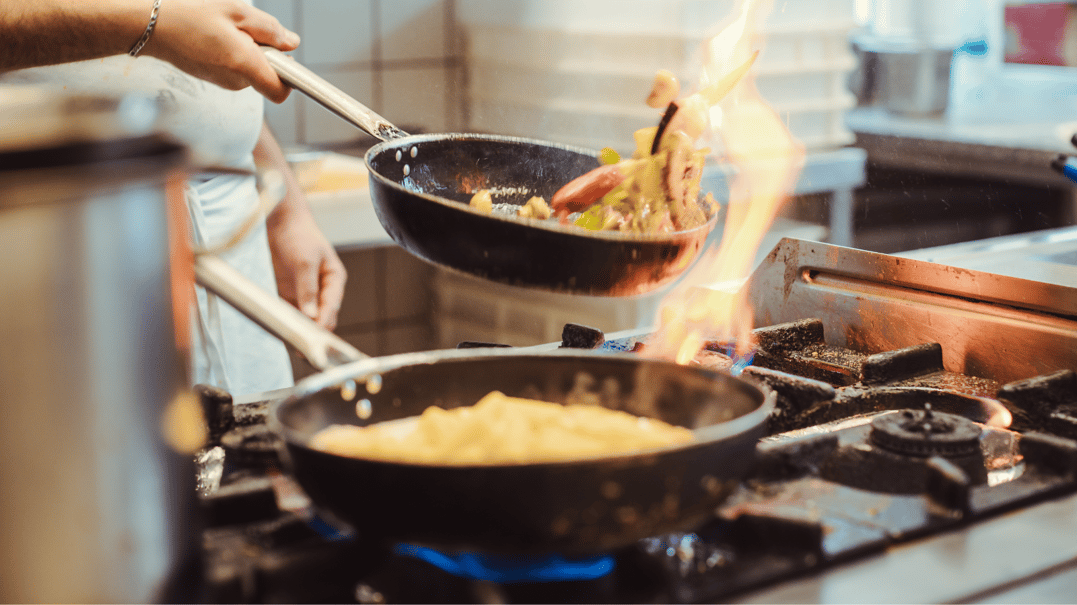California's Gas Ban: Essential Prep for Commercial Kitchens

California officials overturned a new energy code set to ban the sale of gas appliances in the state within ten years. The law aimed to reduce a facility’s carbon footprint by replacing gas-fueled equipment with zero-emissions units. If approved, the ban will significantly impact kitchens in restaurants, schools, hotel chains, senior living facilities, and more.
In this blog, Pro Reps West’s foodservice experts shed more light on the looming gas ban and ways to avoid last-minute changes that cause costly service disruptions.
Understanding a Gas Ban
Introducing a law that bans gas cooking equipment would require swift action by commercial kitchen teams on multiple fronts. Compliance is necessary to keep operations running, so foodservice operators must navigate the intricacies of the new law promptly, avoiding legal repercussions and penalties while ensuring a seamless transition away from gas-powered appliances. Operational continuity is equally crucial given the foundational role of gas-powered machines in many restaurants and being able to quickly prevent service disruptions, safeguarding customer satisfaction and revenue streams.
The abrupt shift to alternative cooking equipment entails significant costs, encompassing the purchase of new appliances, installation, and potential modifications to kitchen infrastructure. Foodservice operators who take a proactive approach to the switch from gas to electric and strategically plan for these expenses can avoid financial strain.
Plan Ahead
Deciding to switch from a gas-centric to an electric-powered commercial kitchen is more than a matter of culinary preference; it's a strategic move with potential financial advantages. Beyond the immediate considerations of precision and control in cooking, there's a compelling economic case for this transition. Electric appliances are known for their accuracy in temperature control and heat distribution, translating to tangible energy savings. While the upfront investment in electric equipment might be higher in some cases, the long-term operational costs often prove more economical due to reduced energy waste. The shift away from gas-fueled cooking solutions not only aligns with sustainability goals and customer preferences but also contributes to lower monthly utility bills.
Plus, there's a high potential for cost savings in commercial kitchens in schools or other industries because many electric solutions include simpler mechanisms and fewer components. And those engineering differences translate to less regularly scheduled inspections and unplanned maintenance. When done efficiently and with the right foodservice partner, this streamlining can lead to long-term savings and free up resources that can be strategically allocated elsewhere.
Potential for Nationwide Change
With California’s newly proposed energy laws, there’s potential for a nationwide shift away from gas-powered kitchen equipment. Even with no current ban, change may be inevitable, with many cities and states already paving the way toward more sustainable culinary practices. Driven by environmental concerns, energy efficiency goals, and a broader societal shift towards sustainable practices, the use of electric appliances has gained traction as a way for commercial facilities to reduce greenhouse gas emissions. For foodservice establishments, this prospective transformation has implications that extend beyond the kitchen. Operators should remain vigilant, monitoring updates from relevant federal agencies, legislative bodies, and industry associations to stay abreast of potential changes.
Exploring Gas-Free Alternatives
The potential shift from gas-powered kitchens opens the door to innovative alternatives like combi ovens that promise efficiency, precision, and higher profits. Electric appliances, including induction cooking technology, emerge as compliant and sustainable cooking solutions for foodservice establishments seeking viable alternatives. Unlike gas appliances, electric equipment offers a level of precision and control in cooking that resonates with chefs aiming for consistency and quality.
Electric solutions like induction cooktops utilize magnetic fields to heat the cookware directly, offering rapid responsiveness and precise temperature control. Induction cooktops waste less heat, which leads to faster cooking times and increased energy savings as opposed to traditional gas burners. Additionally, the absence of an open flame enhances kitchen safety, providing a controlled and secure environment for chefs and kitchen staff.
Pro Reps West works with the top electric solutions brands including:
- Amana Ovens
- Cleveland Range
- Convotherm Combi Ovens
- Frymaster Fryers
- Garland Ranges, Ovens, and Grills
- Lincoln Impinger Pizza Ovens
- Marra Forni Pizza Ovens
- MerryChef High Speed Ovens
- Southern Pride Commercial Electric Smoker
Beyond the culinary advantages, the environmental and sustainability benefits of electric appliances and induction cooking are noteworthy. With a heightened focus on reducing carbon footprints and energy consumption, these alternatives align with broader sustainability goals. In some regions, governmental programs may even incentivize these choices by promoting energy-efficient technologies.
.png?width=3013&height=1826&name=PRW%20Badge%20White%20BG%20(1).png)




